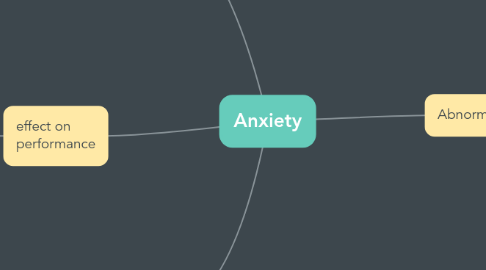
1. normal anxiety
1.1. characteristics
1.1.1. 1- your worrying doesn't get in the way of your daily activates
1.1.2. 2- you are able to control your worrying
1.1.3. 3- you worries, while unpleasant, don't cause significant distress.
1.1.4. 4- your worries are limited to a specific, small number of realistic concerns.
1.1.4.1. for example: ▪ Sitting an exam ▪ Having a medical investigation ▪ Attending a job interview ▪ Giving a performance ▪ Being frightened if threatened
1.1.5. 5- your bouts of worrying last only for short period of time.
1.2. what is its function?
1.2.1. adaptive function
1.2.1.1. ▪ Alert the organism to threats to survival
1.2.1.2. ▪ Prepares for flight or fight response
2. Abnormal anxiety
2.1. when anxiety become abnormal??
2.1.1. Excessively intense / disproportionate to stimulus Continues beyond exposure to danger Triggered by harmless situations Occurs without a cause Can’t be controlled Causes distress Impairs functioning
2.2. types
2.2.1. Pathologic anxiety
2.2.1.1. what is it?
2.2.1.1.1. occurs when the symptoms are excessive, irrational, out of proportion to the trigger or are without an identifiable trigger
2.2.1.2. other names
2.2.1.2.1. anxitey disorders
2.2.1.3. significance
2.2.1.3.1. most prevalent psychiatric conditions worldwide because they Many go to medical specialized clinics seeking treatment for the somatic component of the disorder
2.2.2. Maladaptive anxiety
2.2.2.1. persists longer and feels more intense than transient, situational anxiety

